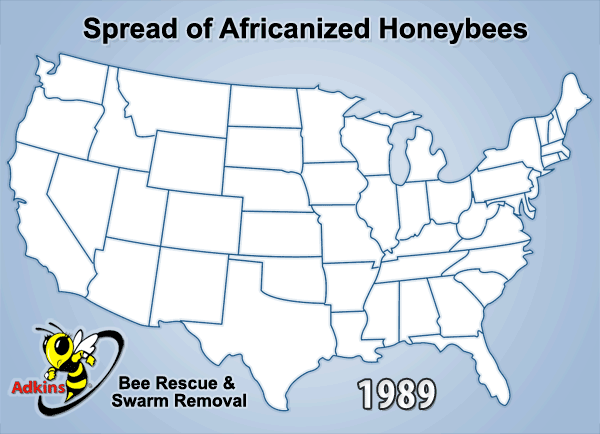Honey Bee Removal
Honey Bee Removal - History Of
Beekeepers have been removing honeybees for many years from problem places for home owners and businesses. Around the 1980's many beekeepers abandoned beekeeping due to new diseases, Tracheal or Varroa mites that still effect honeybees. A short time later with the introduction of the Africanized honeybee to the US, some pest control, or bee exterminating companies began to kill honeybees for profit.
The propaganda of 'killer bees' was very heavy, causing Mexico & lower US states to change there policies. It is likley that bees have become less aggressive due to harsher eco system said to be caused by pollution. Killer bee propaganda from news and media has mostly subsided.
The Africanized honeybee has intermingled with the European honeybee since 50 years ago, starting from South America the bee progressed north through Central America and Mexico creating a hybrid honeybee, lessening the perhaps overly-hyped hostility of the Africanized honeybee.Still it is debated in the US regarding best practice with honeybees species.Though US states have slowed with reporting of Africanized bees also called hybrid honeybees.
Some United States beekeepers are reluctant to collect honeybee swarms for fear of collecting honeybees carrying diseases, or picking up a swarm of feral bees and perhaps being unfamiliar with the status or regulations. Bees from Africa are said to struggle with cool climates and long winters.
Live Honeybee Removal
Because of recent dwindling honeybee population made popular around 2007, tagged as Colony Collapse Disorder (CCD), and the general environmental consciousness, the public as a whole has shifted to seeking live and non-toxic honeybee removal options when finding bees on their property. Adkins bee removal provides information for learning about and solving bee problems as well as a help-line for the US & Canada for removing and relocating bees from structures of homes and businesses.
Africanized Honeybee Migration
The map below shows the migration of the Africanized Honeybee year by year as reported by each State having first arrived to Texas in 1990. You can also view the reported Africanized honeybee (AHB) spread from South America starting from 1957 forward.
